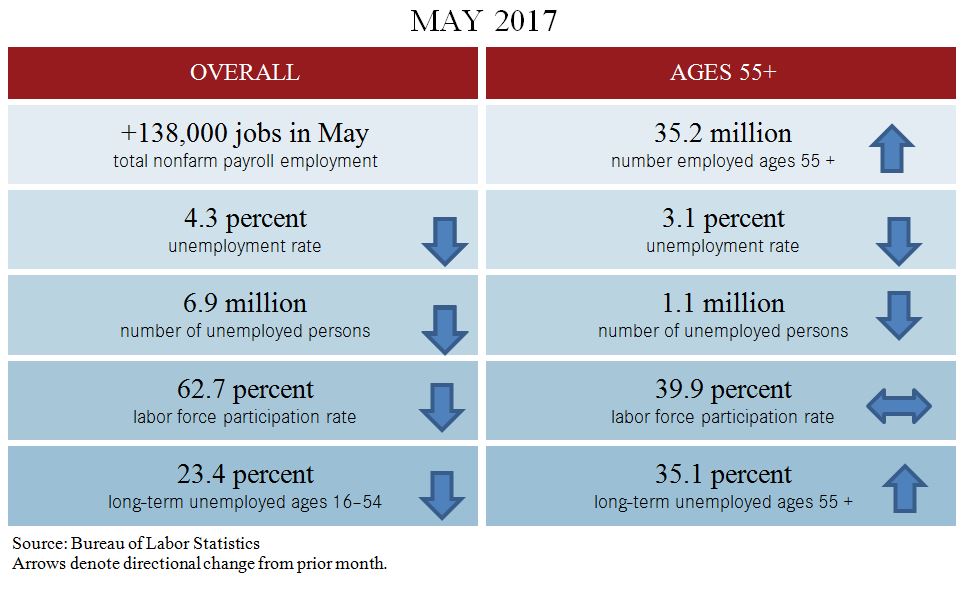AARP Hearing Center
Fewer Jobs Added in May, but Labor Force Participation Rate of Those Ages 55+ Holds Steady
By Jennifer Schramm, June 2, 2017 07:02 PM

Employment overview
The U.S. economy added 138,000 jobs in May, according to the Bureau of Labor Statistics’ newest Employment Situation Report. This was lower than the average monthly gain of 181,000 over the prior 12 months and April’s gain of 174,000 jobs (revised down from 211,000). The unemployment rate in May was 4.3 percent and the number of unemployed persons was 6.9 million. By comparison, the unemployment rate for people age 55 and above was 3.1 percent, with 1.1 million unemployed, and their labor force participation rate was 39.9 percent.
Spotlight on the 55-plus not in the labor force who want to work
In May 2017, 54.5 million people age 55 and older were not in the labor force, compared with 54.3 million in April. This number has been trending up in the last decade, mainly because the overall population is aging. While most individuals age 55-plus who are not in the labor force say they do not want to work, some do.
In 2007, the year before the Great Recession took full hold, just under a million (933,000) people age 55 and older who were not in the labor force said they wanted to work. Of these, 61,000 were considered discouraged workers — individuals who are not currently looking for work because they believe there are no jobs available or there are none for which they would qualify.
During the slow recovery in the years that followed the Great Recession, the number of discouraged workers edged up, including those age 55-plus. By 2010, in one of the worst years in the post-recession job market, 287,000 individuals age 55 and above were considered discouraged workers. Since then, the number of discouraged workers in the 55-plus age category has declined, and in May 2017 it stood at 95,000. While the overall number of 55-plus individuals out of the labor market has increased in the past few years, there are now fewer discouraged workers compared with the heights reached in the aftermath of the recession. This reflects the more favorable economic conditions of recent years, but the numbers are still not as low as in 2007.
The latest annual data show that in 2016 about 277,000 people 55-plus who wanted to work were out of the labor force for reasons other than discouragement. The most common reason was ill health or disability (62,000), followed by family responsibilities (46,000).
As the overall population ages, the number of people age 55-plus out of the labor force may also rise. While some will exit the labor market by choice, others may have different reasons, and these reasons often shift in response to changing economic conditions or broader trends such as those related to health, longevity, education and caregiving.
For more details, check out the May Employment Data Digest, the AARP Public Policy Institute’s monthly review of job trends for those age 55 and over.
































































